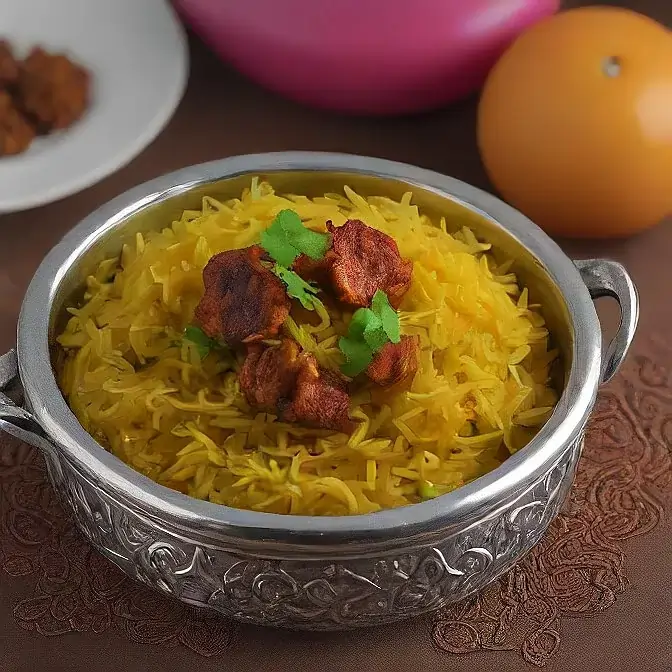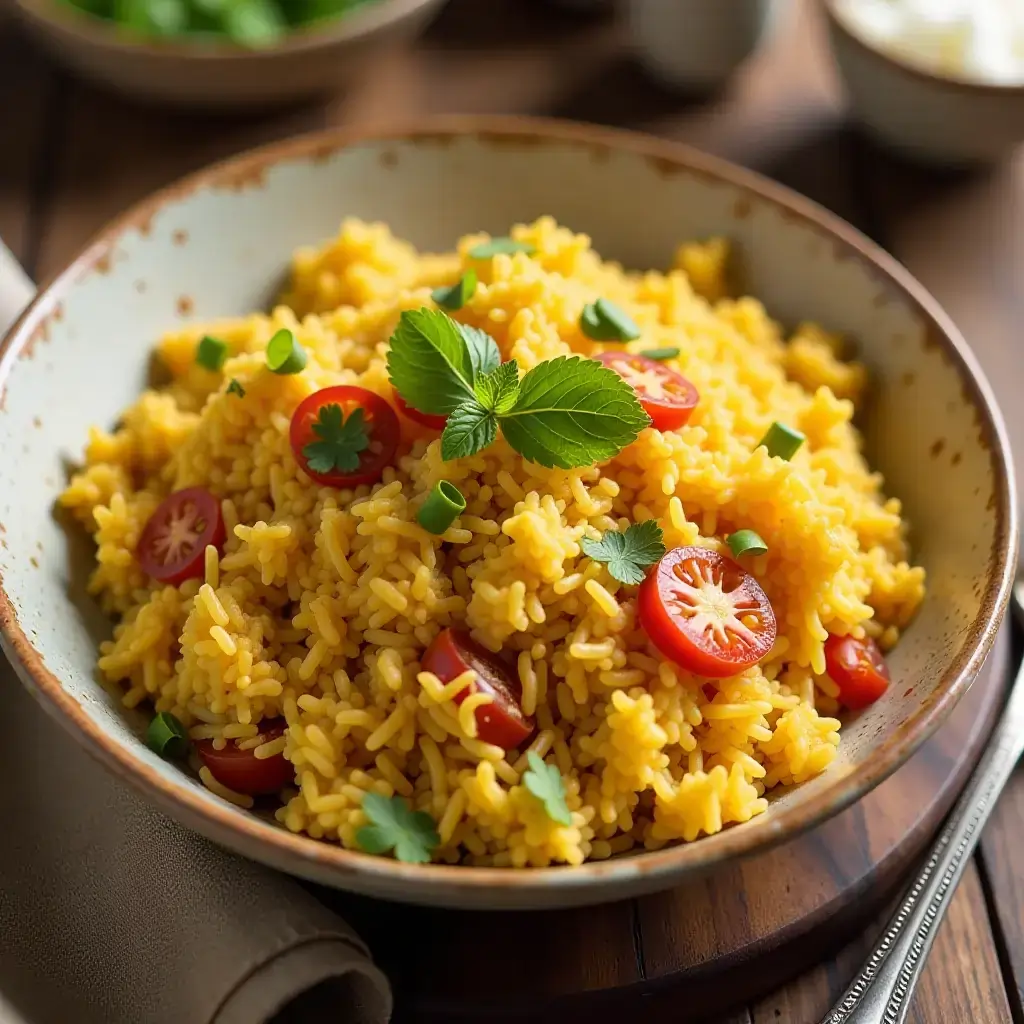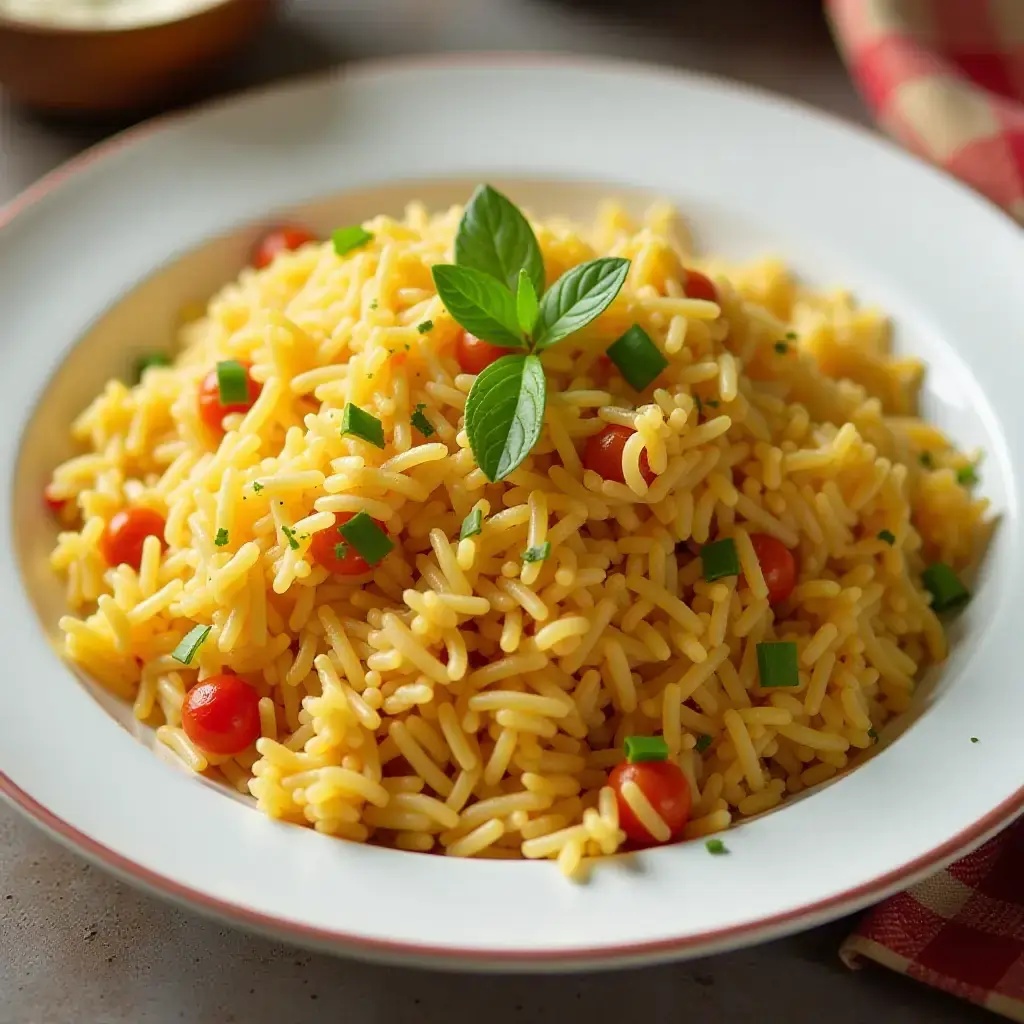Introduction
Biryani is more than just a dish; it’s a celebration of flavors, culture, and tradition. Originating from the royal kitchens of the Mughal Empire, biryani has evolved into one of the most cherished and iconic dishes in South Asia. This fragrant, flavorful rice dish is a harmonious blend of spices, tender meat or vegetables, and perfectly cooked basmati rice, layered and cooked to perfection.
What makes biryani truly special is its versatility. Whether it’s the smoky Hyderabadi biryani, the fragrant Lucknowi biryani, or the spice-packed Kolkata biryani, each region adds its unique touch to this timeless classic. The process of making biryani involves precision and patience, but the results are nothing short of spectacular.
In this blog post, I’ll guide you through an authentic biryani recipe that captures the essence of this beloved dish. Whether you’re a seasoned cook or a beginner, this step-by-step guide will ensure your biryani turns out flavorful, aromatic, and delicious.
Get ready to impress your family and friends with a homemade biryani that rivals the best restaurant versions. Let’s dive in!
What is Biryani? A Quick Overview
Biryani is a timeless dish that has earned its place as a culinary treasure in South Asia and beyond. Known for its rich aroma and complex flavors, biryani is much more than just a rice dish—it’s a blend of art, culture, and tradition.
Origins of Biryani
Biryani’s roots can be traced back to the Mughal Empire, where it was introduced as a royal delicacy. The name “biryani” is believed to come from the Persian word “birian,” meaning “fried before cooking,” referring to the technique of cooking the rice. Over time, this dish evolved as it traveled across India and neighboring regions, incorporating local ingredients and cooking styles.
What Makes Biryani Unique?
At its core, biryani is a layered rice dish made with aromatic basmati rice, meat (chicken, mutton, or seafood), or vegetables, and a medley of spices like cardamom, cloves, and cinnamon. What sets biryani apart is the meticulous layering of cooked rice and spiced meat or vegetables, which are then slow-cooked (often using the dum technique) to allow the flavors to meld together.
Types of Biryani
Biryani comes in many regional variations, each with its unique characteristics:
- Hyderabadi Biryani: Known for its bold spices and the dum cooking method.
- Lucknowi (Awadhi) Biryani: Milder and more aromatic, with meat cooked separately and layered with rice.
- Kolkata Biryani: Infused with saffron and includes potatoes, a signature ingredient.
- Malabar Biryani: A coastal twist, featuring fried onions and a lighter flavor profile.
This diversity ensures there’s a biryani for every palate, making it a dish that transcends borders and preferences.
By understanding its history and the unique characteristics that define biryani, you’ll gain a deeper appreciation for this extraordinary dish. Let’s now move on to the ingredients that bring this recipe to life!
Essential Ingredients for Authentic Biryani
The magic of biryani lies in its carefully selected ingredients, each playing a vital role in creating its iconic flavor, aroma, and texture. Below is a breakdown of the key components that make up an authentic biryani:
1. Key Ingredients
- Basmati Rice: Long-grain basmati rice is the foundation of biryani. Its fragrant aroma and fluffy texture are essential for achieving the perfect dish. Opt for aged basmati rice for the best results.
- Meat or Vegetables: Traditional biryani uses chicken, mutton, lamb, or seafood, marinated to infuse flavor. For vegetarian versions, hearty vegetables like potatoes, carrots, and beans work beautifully.
- Yogurt (Curd): Used in the marinade, yogurt tenderizes the meat and adds a subtle tanginess to the dish.
- Saffron: Saffron threads soaked in warm milk or water impart a golden hue and luxurious aroma to the rice layers.
2. The Role of Spices
Biryani is a celebration of spices, which are the soul of this dish:
- Whole Spices: Cardamom, cloves, cinnamon sticks, bay leaves, and star anise are used to infuse the rice and meat with a warm, earthy aroma.
- Ground Spices: Turmeric, red chili powder, garam masala, and coriander powder add depth and color.
- Ginger-Garlic Paste: A blend of fresh ginger and garlic provides a robust flavor base.
3. Optional Additions for Enhanced Flavor
- Fried Onions: Thinly sliced and fried until golden brown, they add a sweet crunch to each layer.
- Dried Fruits and Nuts: Cashews and raisins bring richness and a touch of sweetness.
- Fresh Herbs: Mint and coriander leaves add a refreshing burst of flavor and color.
4. Essential Cooking Mediums
- Ghee (Clarified Butter): Enhances the richness and adds a nutty aroma.
- Cooking Oil: Used for frying onions or as a lighter alternative to ghee.
The right combination of these ingredients is the first step toward crafting a flavorful biryani. In the next section, we’ll dive into the process of transforming these ingredients into a masterpiece with a step-by-step guide.

Step-by-Step Guide to Making Biryani
Creating an authentic biryani requires patience and precision. This step-by-step guide will walk you through the process, ensuring each layer is flavorful and aromatic.
1. Preparing the Ingredients
Proper preparation is key to achieving a perfect biryani:
- Wash and Soak the Rice: Rinse basmati rice until the water runs clear, then soak it for 30 minutes to prevent it from breaking during cooking.
- Marinate the Meat: In a bowl, mix yogurt, ginger-garlic paste, turmeric, chili powder, garam masala, salt, and lemon juice. Coat the meat thoroughly and let it marinate for at least an hour (overnight is even better for deeper flavor).
- Prepare the Vegetables: For vegetarian biryani, chop vegetables like potatoes, carrots, and beans into bite-sized pieces.
2. Cooking the Rice
Achieving perfectly cooked rice is critical:
- Boil with Spices: In a large pot, bring water to a boil. Add salt, bay leaves, cardamom, cloves, and cinnamon for a fragrant base.
- Parboil the Rice: Cook the soaked rice until it’s about 70% done. The grains should be firm but slightly undercooked. Drain and set aside.
3. Cooking the Meat or Vegetables
Enhance the flavor of your base layer:
- Sauté the Aromatics: Heat ghee or oil in a pan. Add sliced onions and fry until golden brown. Remove half for layering.
- Cook the Meat or Vegetables: Add the marinated meat or vegetables to the pan and cook until tender. Add tomatoes and a splash of water if needed to create a thick, flavorful gravy.
4. Layering and Dum Cooking
The layering technique is what gives biryani its signature taste and texture:
- Layer the Ingredients: In a heavy-bottomed pot, layer cooked rice and meat/vegetables alternately. Start with a layer of rice, followed by the meat or vegetables, and repeat. Sprinkle fried onions, saffron milk, and fresh herbs (mint and coriander) between layers.
- Seal the Pot: Cover the pot with a tight-fitting lid. Seal the edges with dough or a heavy cloth to trap the steam.
- Cook on Dum: Place the pot on low heat (or on a tava/griddle to avoid direct heat) for 20-30 minutes. This slow-cooking process allows the flavors to meld beautifully.
5. The Final Touch
- Fluff and Serve: Gently fluff the biryani with a fork to avoid breaking the rice grains.
- Garnish: Add a sprinkle of fried onions, cashews, or raisins for extra flavor and presentation.
With this method, you’ll achieve a biryani that’s fragrant, flavorful, and layered with perfection. In the next section, I’ll share expert tips to ensure your biryani is flawless every time!
Tips for Perfecting Your Biryani
Mastering biryani can feel like an art, but with the right techniques, you can consistently achieve a flavorful, aromatic, and visually stunning dish. Here are some expert tips to take your biryani to the next level:
1. Choosing the Right Ingredients
- Basmati Rice: Always use long-grain basmati rice, preferably aged, for a fluffy and non-sticky texture. Soak the rice before cooking to prevent breakage.
- Fresh Spices: Ensure your spices are fresh and aromatic. Toast whole spices lightly before using to enhance their flavor.
- High-Quality Meat: Use tender cuts of meat for faster cooking and a juicy texture. For chicken, thighs or drumsticks are ideal.
2. Getting the Rice Texture Right
- Don’t Overcook the Rice: Parboil the rice until it’s 70% cooked—soft on the outside but still firm inside. Fully cooked rice will become mushy during layering.
- Salt the Water Generously: The rice should absorb enough salt during boiling to enhance the overall flavor of the biryani.
3. Perfecting the Layering Process
- Balance the Layers: Ensure an even distribution of rice and meat or vegetables. This allows all layers to absorb the flavors uniformly.
- Add Aromatic Enhancers: Sprinkle saffron-infused milk, fried onions, and fresh herbs like mint and coriander between layers to amplify the aroma and flavor.
- Moisture Control: Add a little gravy or a drizzle of ghee in each layer to keep the biryani moist and flavorful.
4. Nailing the Dum Cooking Technique
- Seal the Pot Properly: Use dough or a heavy cloth to seal the pot. This traps the steam (dum) and ensures the flavors meld together.
- Use Low Heat: Place the pot on low heat or over a tava (griddle) to avoid burning the bottom layer. Cook for at least 20-30 minutes to allow the dum process to work its magic.
5. Avoiding Common Mistakes
- Don’t Overspice: Use spices judiciously to balance the flavors without overwhelming the dish.
- Watch the Rice-to-Meat Ratio: Maintain the proper balance—usually 2 parts rice to 1 part meat or vegetables.
- Avoid Opening the Lid Too Early: Let the biryani rest for a few minutes after dum cooking before opening the lid to let the flavors settle.
6. Serving Tips
- Layer While Serving: Gently scoop biryani from the bottom to preserve the layers and presentation.
- Pair with Accompaniments: Serve with cooling raita, pickles, or a fresh salad to complement the rich flavors.
By following these tips, you’ll be able to create biryani that is restaurant-quality, with perfectly cooked rice, tender meat, and flavors that will delight everyone at the table. Ready to plate up? Let’s explore the best ways to serve and enjoy your masterpiece in the next section!
Serving and Enjoying Your Biryani
Once you’ve perfected your biryani, the final step is to present and enjoy it to its fullest potential. Here are some tips on how to serve this culinary masterpiece, ensuring every bite is as delightful as the last.
1. Perfect Accompaniments
Biryani is a rich and flavorful dish, so pairing it with the right accompaniments enhances the overall experience:
- Raita: A cooling yogurt-based side dish that helps balance the spices. Popular variations include cucumber raita, mint raita, or boondi raita.
- Salads: A refreshing salad of sliced onions, tomatoes, cucumbers, and a squeeze of lime offers a crunchy contrast to the soft and rich biryani.
- Pickles: Tangy and spicy pickles (mango or lime) add a burst of flavor and cut through the richness of the biryani.
- Boiled Eggs: A common and delicious garnish, boiled eggs are often placed on top of biryani to add texture and flavor.

2. Presentation Tips
The visual appeal of biryani adds to its enjoyment. Here’s how to present it beautifully:
- Layer the Biryani: When serving, carefully scoop out the biryani from the bottom of the pot, ensuring you retain the layers of rice, meat, and spices. This preserves the beautiful presentation.
- Garnish with Fried Onions and Fresh Herbs: Sprinkle crispy fried onions, a handful of coriander, and mint leaves over the top to make the dish look more appealing and aromatic.
- Serve in a Traditional Style: Consider serving biryani in a large, shallow dish or a traditional biryani handi for an authentic touch.
3. Storing Leftovers and Reheating
If you happen to have leftovers (though this rarely happens!), here’s how to store and reheat your biryani without losing its flavor and texture:
- Storage: Allow the biryani to cool completely before storing it in an airtight container. It can stay in the fridge for 2-3 days.
- Reheating: To retain the moisture, sprinkle a little water or saffron milk over the biryani before reheating it in the microwave or on the stove. Cover it to trap the steam and prevent the rice from drying out.
4. The Ultimate Biryani Experience
Biryani is more than just a meal; it’s an experience to be savored. Take your time to enjoy the tender meat, fluffy rice, and aromatic spices. Whether you’re sharing it with family, friends, or enjoying it solo, biryani brings people together, making every occasion special.
Pair your biryani with a chilled drink like sweet lassi or a chilled mint lemonade for a refreshing contrast. And don’t forget to end your meal with a sweet treat, such as kheer or gulab jamun, to complete the perfect biryani feast.
By following these serving suggestions, you’ll not only create a meal that’s rich in flavor but also one that’s visually stunning and perfect for any occasion. Enjoy your biryani, and remember, the true joy lies in sharing this aromatic, comforting dish with loved ones!
Conclusion
Making an authentic biryani is an art that requires patience, skill, and the right ingredients. From selecting the finest basmati rice and spices to perfecting the marination and cooking techniques, every step is essential to creating a dish that’s both flavorful and aromatic. Whether you’re making a chicken, mutton, or vegetarian version, the process of layering the rice and meat (or vegetables) and allowing it to cook on dum creates a harmony of flavors that make biryani so beloved.
In this step-by-step guide, you’ve learned the essential ingredients, tips for perfecting your biryani, and how to serve it with the perfect accompaniments. Each layer of rice, spice, and tender meat tells a story of tradition, passion, and craftsmanship.
I hope this recipe inspires you to recreate this timeless dish in your kitchen, bringing the rich aroma and flavors of authentic biryani to your family and friends. Remember, cooking biryani is as much about enjoying the journey as it is about savoring the result.

Don’t forget to share your biryani creation with us! We’d love to hear how it turned out and any personal twists you added to the recipe. Happy cooking, and may your biryani always be perfectly spiced and irresistibly delicious!

